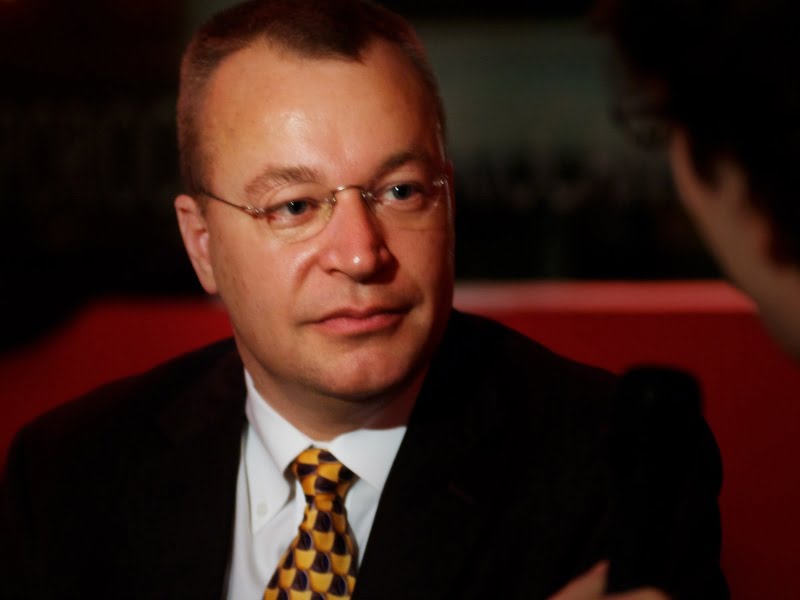Telstra chief executive Andy Penn’s ambitious bid to recast the telco as a technology company is underway, with former Nokia chief and senior Microsoft executive Stephen Elop starting work at the company last week.
It’s a grand and rather brave experiment by Mr Penn, and one for which he should be applauded. Such moves are rare enough in the cautious, plodding world of Australian blue chip companies, although shareholders will remain nervous until Mr Penn has a couple of years of solid results behind him.

Readers with long memories will remember that Telstra has been down this road before under former chief executive Ziggy Switkowski’s ill-fated and ill-timed dotcom era gamble that blew up spectacularly amid the carnage of the 2000-2001 tech crash.
Mr Elop’s official title is Group Executive, Technology, Innovation and Strategy. But the real key in this: he is “responsible for the company’s strategy to become a world class technology company”.
Importantly, and this is very much of the modern corporate leader, Mr Elop will divide his time between Australia and the US.
A new business unit was created as Mr Penn tweaks the structure of the company. It brings together the company’s Chief Technology Officer, Chief Scientist, Telstra Software Group and Corporate Strategy to create a business unit that is focused on technology and customer expectations.
The Chief Technology Office, under CTO Vish Nandlall, who only joined Telstra 18 months ago from Ericsson North America, runs the company’s fiendishly complex IT systems and is responsible for investigating the future technologies that will impact Telstra’s business.
Telstra’s Chief Scientist is veteran Hugh Bradlow who has been in the role about two decades and who could be up for replacement as Mr Elop finds his feet. His role is understanding longer term disruptive opportunities of technology.
Telstra Software Group chief Charlotte Yarkoni is another US import who cut her teeth at storage and cloud companies EMC and VMWare before co-founding muru-D, the startup incubator created by Telstra in 2013. The software group also includes its Silicon Valley based Ooyala media streaming software business.
“Software will continue to be a key focus area as we drive our growth for the future in new technologies and new technology companies and the Telstra Software Group aims to create long-term global growth in markets adjacent to Telstra’s core business, where software disrupts traditional business models,” a Telstra spokesperson said.
On the plus side, it is terrific that Telstra has attracted someone like Mr Elop with an intimate understanding of the global tech sector.
But let’s play devil’s advocate. Mr Elop’s track record is certainly not unsoiled. He left his job as head of Microsoft’s Business Division in 2010 to run Nokia. He failed to rescue the company, once the world’s unassailable leader in mobile phones as it imploded after not responding quickly enough to the 2007 appearance of the iPhone.
His decision to move the company onto Microsoft Windows rather than Android was arguably the last nail in Nokia’s coffin. Mr Elop then sold what was left of Nokia in 2013 and hardly covered himself in glory before joining Telstra. But in the tech sector its as much about learning from your mistakes, they say.
It’s also worth wondering what’s in the Telstra job for him, a second tier role with a profitable but still reasonably provincial telecoms company at the other end of the world. At least he hasn’t been handed the keys to the castle like the carpetbagger Sol Trujillo, the last unemployed American brought in for a senior role in Telstra.
But the position of strategy chief is a big one – as is Mr Penn is betting that strategy on being able to help Telstra, finally, morph from being a telco with IT and media add-ons to a fully-fledged technology group.
Mr Penn’s insurance, if you like, is the appointment of former Optus and Hutchison “3” chief executive Kevin Russell as his retail chief.
Mr Russell has long been admired as one of the sharpest telco execs in the business. His time at Optus was not happy and he left after only two years, which InnovationAus.com understands was at the controlling hand of the company’s owner SingTel.
His job at Telstra is to keep driving the vast consumer engine room of mobiles and broadband, spinning out cash for dividends and the investments that Mr Elop needs to continue adding to the company’s technology capabilities.
It’s a strategy that is not without risk, but one which these earlier appointments may provide Mr Penn some comfort.
As Ziggy Switkowski searched around for executives to bring into his senior team, he too bet on a tech industry veteran in the shape of then IBM Australia and New Zealand chief David Thodey.
After proving to be the company’s best business unit manager, when he eventually got the chance to run Telstra, Mr Thodey proved to be the magic that the company finally needed to restore its reputation and market value.
Mr Penn will be hoping that with Stephen Elop, lightening can strike twice.
Photo Credit: by Luca Sartoni via http://bit.ly/1YstjYp
Do you know more? Contact James Riley via Email.

